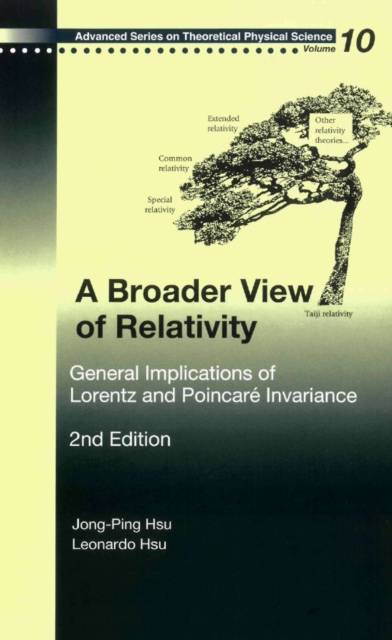
Je cadeautjes zeker op tijd in huis hebben voor de feestdagen? Kom langs in onze winkels en vind het perfecte geschenk!
- Afhalen na 1 uur in een winkel met voorraad
- Gratis thuislevering in België vanaf € 30
- Ruim aanbod met 7 miljoen producten
Je cadeautjes zeker op tijd in huis hebben voor de feestdagen? Kom langs in onze winkels en vind het perfecte geschenk!
- Afhalen na 1 uur in een winkel met voorraad
- Gratis thuislevering in België vanaf € 30
- Ruim aanbod met 7 miljoen producten
Zoeken
Broader View of Relativity, A: General Implications of Lorentz and Poincare Invariance (2nd Edition)
Jong-Ping Hsu, Leonardo Hsu
€ 294,95
+ 589 punten
Omschrijving
A Broader View of Relativity shows that there is still new life in old physics. The book examines the historical context and theoretical underpinnings of Einstein's theory of special relativity and describes Broad Relativity, a generalized theory of coordinate transformations between inertial reference frames that includes Einstein's special relativity as a special case. It shows how the principle of relativity is compatible with multiple concepts of physical time and how these different procedures for clock synchronization can be useful for thinking about different physical problems, including many-body systems and the development of a Lorentz-invariant thermodynamics. Broad relativity also provides new answers to old questions such as the necessity of postulating the constancy of the speed of light and the viability of Reichenbach's general concept of time. The book also draws on the idea of limiting-four-dimensional symmetry to describe coordinate transformations and the physics of particles and fields in non-inertial frames, particularly those with constant linear accelerations. This new edition expands the discussion on the role that human conventions and unit systems have played in the historical development of relativity theories and includes new results on the implications of broad relativity for clarifying the status of constants that are truly fundamental and inherent properties of our universe.
Specificaties
Betrokkenen
- Auteur(s):
- Uitgeverij:
Inhoud
- Aantal bladzijden:
- 536
- Taal:
- Engels
- Reeks:
- Reeksnummer:
- nr. 10
Eigenschappen
- Productcode (EAN):
- 9789812566515
- Verschijningsdatum:
- 1/12/2006
- Uitvoering:
- Hardcover
- Formaat:
- Genaaid
- Afmetingen:
- 155 mm x 229 mm
- Gewicht:
- 893 g

Alleen bij Standaard Boekhandel
+ 589 punten op je klantenkaart van Standaard Boekhandel
Beoordelingen
We publiceren alleen reviews die voldoen aan de voorwaarden voor reviews. Bekijk onze voorwaarden voor reviews.









